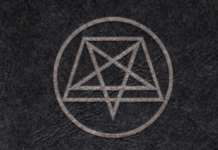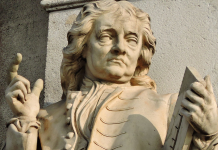![]() The Lovecraft Lexicon: A Reader’s Guide to Persons, Places and Things in the Tales of H.P. Lovecraft, by Anthony B. Pearsall
The Lovecraft Lexicon: A Reader’s Guide to Persons, Places and Things in the Tales of H.P. Lovecraft, by Anthony B. Pearsall
New Falcon Publications, 1561841293, 472 pp. (incl. appendix), 2005
Lovecraft invented so many creatures and places, for a new reader approaching his works for the first time, keeping them straight could seem overwhelming. The Lovecraft Lexicon aims to aid the reader by providing a useful guide to his creations: people, places, things, and, of course, Things. It’s a neat idea, and it works.
Pearsall begins with a brief explanation of his purpose in writing the lexicon, then launches into a brief twenty-four page biography of Lovecraft; the introduction concludes with a note on Pearsall’s sources. Prefacing the lexicon itself is a Chronology of Selected Tales,1 and the Abbreviations of Selected Tales Referenced in the Lexicon listed alphabetically,2 both handy references.
Howard Philip Lovecraft was born into a wealthy family that lost most of its money with the death of his grandfather. His father went mad when he was a boy, and when he was a man of thirty-one his mother suffered the same fate. He lived with the latter for most of his life – until she was committed, after which he lived with his aunts, who cared for him in her stead. He was eventually married to Sonia Greene, a Russian-Jewish immigrant, and this brought him briefly to New York, however the marriage did not last long.
It seems that ‘[a]ll his life Lovecraft was addicted to making dogmatic judgments and pronouncements on such varied topics…there is something in Lovecraft’s corpus of persevered opinions to infuriate just about everybody’.3 As such, the modern reader’s frustration with Lovecraft’s racism is captured well with the following comment from Pearsall: ‘It seems simply disappointing in a man who was so capable of grand-scale thinking in many other directions’.4
Lovecraft was hopeless with money, believing that it was better to write for his own pleasure, arguing that his writing ‘should be a gentlemanly, amateur pursuit, indulged in primarily for his own pleasure, secondly perhaps for the entertainment of his circle of friends to whom he might show his work, thirdly, if at all, for filthy lucre’.5
He was only forty-six when he died of a ‘relatively rare form of cancer and…kidney disease…Only days after the diagnosis, Lovecraft was moved to the Jane Brown Memorial Hospital in Providence, where he died a few days later….He was buried along side his parents; fans put a headstone on his grave forty years later’.6
For all his shortcomings as a human being, as a writer he is virtually unparalleled in his chosen genre. Unfortunately, he did not recognize that; Lovecraft died thinking he was a failure. He never published a book in his lifetime. The popularity of what came to be called the Cthulhu Mythos began after his death, and to date it has inspired films, role-playing games, comics, art, further tales and explorations of the worlds Lovecraft created, and more.
As Pearsall notes ‘Lovecraft wrote volumes of fiction, poetry, and personal letters’, and while this book is 472 pages all told, the sheer volume of writing Lovecraft produced requires some selection in which to include in the present lexicon. Therefore, ‘[f]or purposes of this book, some line needed to be drawn, and [he] chose to draw it around the canonical fifty-two principal tales, four “early tales”, and three “fragments” contained in [several] standard editions’.7
While Pearsall acknowledges that he deliberately left some things out, he more than adequately covered any topic I could think to look up. For example, the entry for Nyarlathotep notes the stories he appeared in, comments on how Lovecraft’s conception of the character varied over time, explains the Egyptian references, notes his first appearance in a prose poem bearing his name and further explores Nyarlathoteop’s role in the stories in which he appeared.
Entries generally consist of a brief synopsis of the role the entry played, which stories it appeared in, histories, correspondence from Lovecraft or his associates and other trivia. The section on cemeteries is longer than most, consisting of three pages describing the various cemeteries which have featured in his stories over the years, and separate entries for individual cemeteries also appear. A twenty-five page appendix follows the bulk of the text detailing the ‘Caves, Caverns, Wells & Abysses’ from various stories placing them in the context, often with extensive quotes.
Pearsall has presented a clear, comprehensive guide to Lovecraft’s worlds, Gods, creatures, people and places. This guide is a treasure for those newly approaching Lovecraft’s works, and old hats who will want to use it as a reference for refreshing one’s mind on a particular item, person, place, or story. A truly marvellous compendium.








